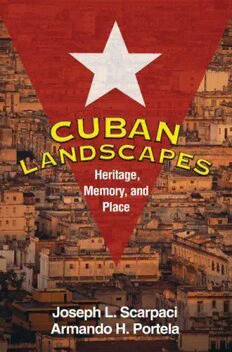
Cuban Landscapes: Heritage, Memory, and Place (Texts In Regional Geography) PDF
225 Pages·2009·9.049 MB·English
Most books are stored in the elastic cloud where traffic is expensive. For this reason, we have a limit on daily download.
Preview Cuban Landscapes: Heritage, Memory, and Place (Texts In Regional Geography)
Description:
This accessible book offers a vivid geographic portrait of Cuba, exploring the island’s streetscapes, sugar cane fields, beaches, and rural settlements; its billboards, government buildings, and national landmarks. The authors illuminate how natural and built landscapes have shaped Cuban identity (cubanidad), and vice versa. They provide a unique perspective on Cuba’s distinct historical periods and political economies, from the colonial period through republicanism and today’s socialist era. Compelling topics include the legacies of slavery and the sugar industry, the past and future of urban development, and the impact of “islandness” on sociocultural processes.
See more
The list of books you might like
Most books are stored in the elastic cloud where traffic is expensive. For this reason, we have a limit on daily download.
